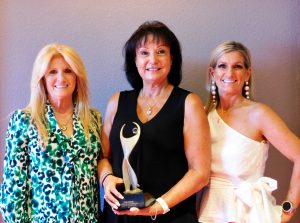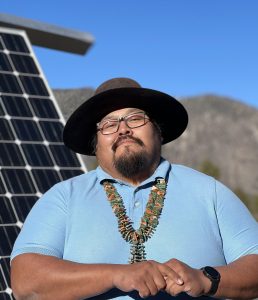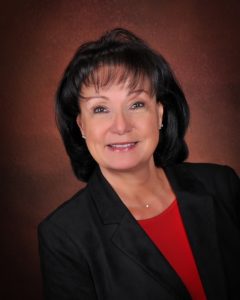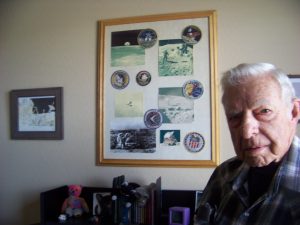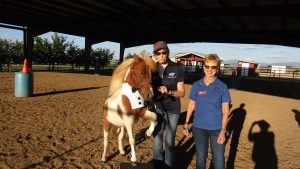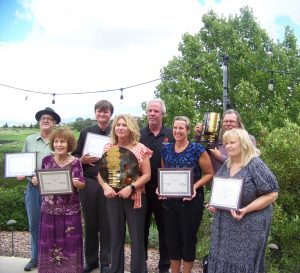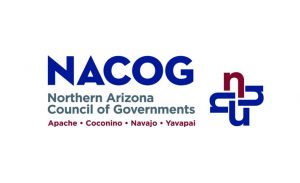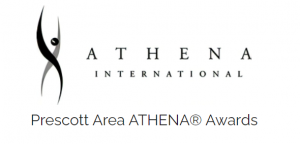Historic stables offer rides along scenic trails.
Working every aspect of the business, Historic Hitchin’ Post Stables Operations Manager Angel Heckethorn is happier than ever. “I get to be around horses and meet people from all over the world.”
The Heckethorn family acquired the property earlier this year and will be offering the same trail rides as the previous owner. “Our rides are one to three hours through Walnut Canyon, Fay Canyon and Sandy Canyon. The longest ride is about seven miles,” she said.
Roger Hartman owned Historic Hitchin’ Post Stables for more 50 years. “For a while now, he’s been trying to get us to buy it, as he wanted the right people who would continue the business he established,” said Heckethorn.
The history of Historic Hitchin’ Post Stables draws from Flagstaff’s earlier days when Lake Mary Road was barely two lanes and traffic signals didn’t exist for miles. The future of this equestrian themed adventure park is packed with a bucketful of fun, along with scenic trail rides.
Through the years, movie directors and production companies have used Hartman’s horses for their sets. According to Locations Southwest and Productions Services (LSW), “Roger was a great horseman and we used his horses for a lot of productions. He did some work for Kenny Rogers, The Gambler movies and provided training for riders when we were doing different TV commercials. He even had a zebra that he trained for a shoot in Monument Valley.”
The stables provide riding lessons for ages 5 and up, year-around boarding for horses, camping, RV hook-ups and special events. The Pumpkin Patch Festival happens this month, offering a bounce house, games, arts and crafts, pony rides and pumpkins for sale.
“Starting next spring we will be offering cowboy cookout rides for lunch and dinner. We’ll be serving Old West cowboy style meals cooked in Dutch ovens,” said Heckethorn.
Teresa Dalziel, from St. Petersburg, Florida, found Historic Hitchin’ Post Stables through a tour company online. “I’m an experienced rider, so every time my husband and I travel, we look for a place that I can ride horses and see the scenery as well. It’s absolutely gorgeous here and I like the way the barns and stables are set up. The horses are well taken care of and they look clean and healthy.”
Heckethorn was born in Missouri and spent her early childhood in Golden, Colorado. In 2002, she moved to Prescott, where she lived for 15 years before relocating to Flagstaff.
“I had horses all throughout my life. I was in 4H and Future Farmers of America and rode and trained in high school. I also worked at a few show barn horse facilities and showed horses. I started a horse rescue in Prescott called Tending Animals in Loving Safety, TAILS.”
Heckethorn’s daily schedule includes horseback tours, feeding, scheduling veterinarian appointments and Ferrier work. She and her husband, Earl, have three children – Colton, 22; Selena, 20; and Kaleb, 13 – who all help out.
Hitchin’ Post bookkeeper Jodi Cook has worked at the stables since April. “I love being around the horses and the people here. They are all great. It’s really not like a job and I pitch in wherever I can. I really enjoy working with Angel. She is actually my sister-in-law, so we hit it off good together.”
“My husband, Earl, has been my savior when it comes to tractor work, heavy lifting and maintenance here at Historic Hitchin’ Post Stables,” said Heckethorn. “He and his family own C&E Paving, where he works full-time, but he always is here to help when I need him.”
Depending on snow accumulations, Historic Hitchin’ Post Stables hopes to offer wintertime fun such as sleigh rides and trail rides.
Historic Hitchin’ Post Stables offers trail rides from 8 a.m. to 5 p.m., Tuesday through Sunday. For more information, call 928-774-1719. QCBN
By V. Ronnie Tierney





